
Posts Tagged: larva
Do 'Cats Eat Other 'Cats? Do Larva Eat Other Larva?
It's a dog-eat-dog world out there. It's also a 'cat-eat-'cat world, that is, when a caterpillar eats another caterpillar. Or in this case, when larva eats larva. We recently spotted this lady beetle larva eating a syrphid fly larva on our yellow rose bush, "Sparkle and Shine." Both eat aphids,...
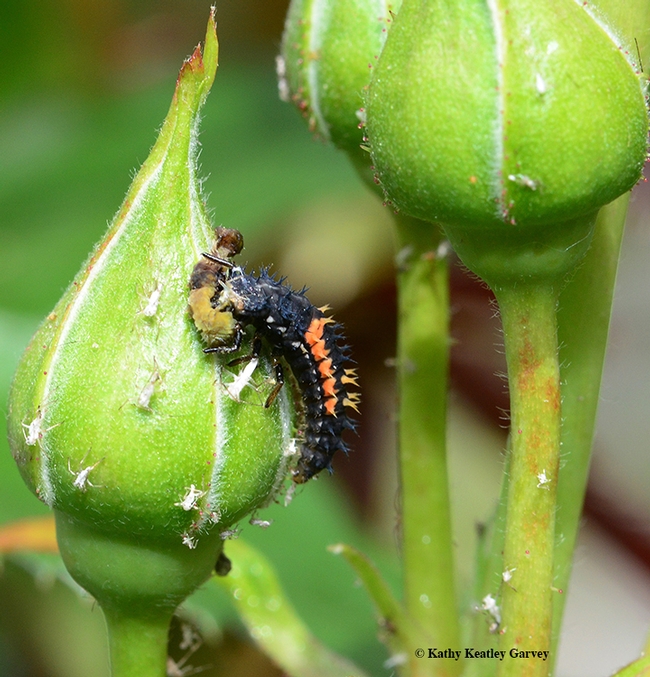
A lady beetle larva attacking and eating a syrphid fly larva. (Photo by Kathy Keatley Garvey)
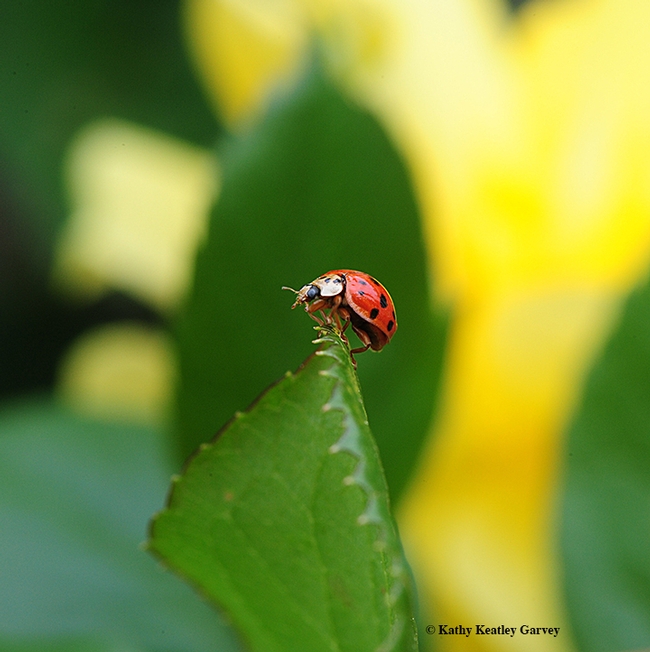
The lady beetle larva (first photo) grew to an adult like this one. This is an Asian lady beetle. Regarding cannibalism, monarch caterpillars can and do eat one another. (Photo by Kathy Keatley Garvey)
From an Egg to a Caterpillar to a Chrysalis to a Monarch
Have you ever seen a monarch butterfly (Danaus plexippus) lay an egg on her host plant, the milkweed? Have you ever seen a close-up of the egg? The larva or caterpillar? The chrysalis? The eclosure (when the adult emerges from the chrysalis)? It's a fascinating sight. Not all eggs...

A monarch laying an egg on her host plant, milkweed. (Photo by Kathy Keatley Garvey)
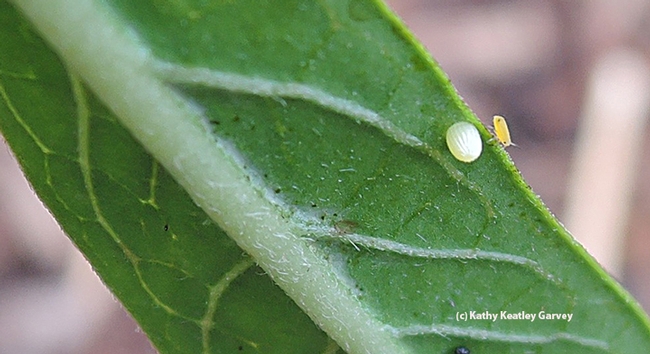
Close-up of a cream-colored monarch egg. Note the oleander or milkweed aphid next to it. (Photo by Kathy Keatley Garvey)

A very tiny caterpillar but it's big enough to start eating holes in the leaves. (Photo by Kathy Keatley Garvey)

A fifth-instar monarch caterpillar. (Photo by Kathy Keatley Garvey)
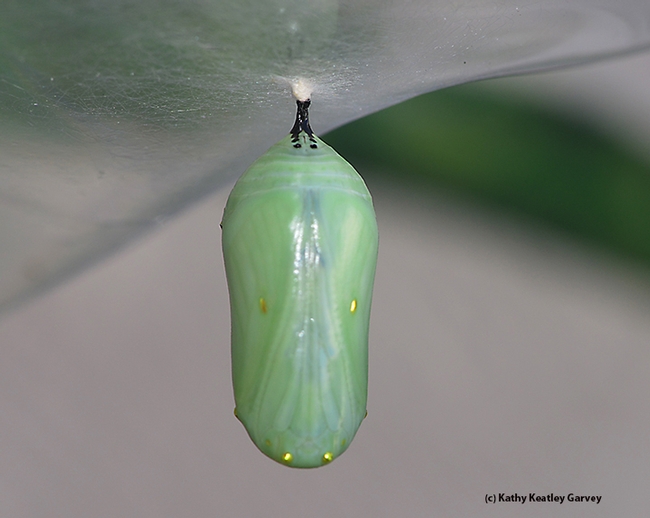
The jade green chrysalid. (Photo by Kathy Keatley Garvey)
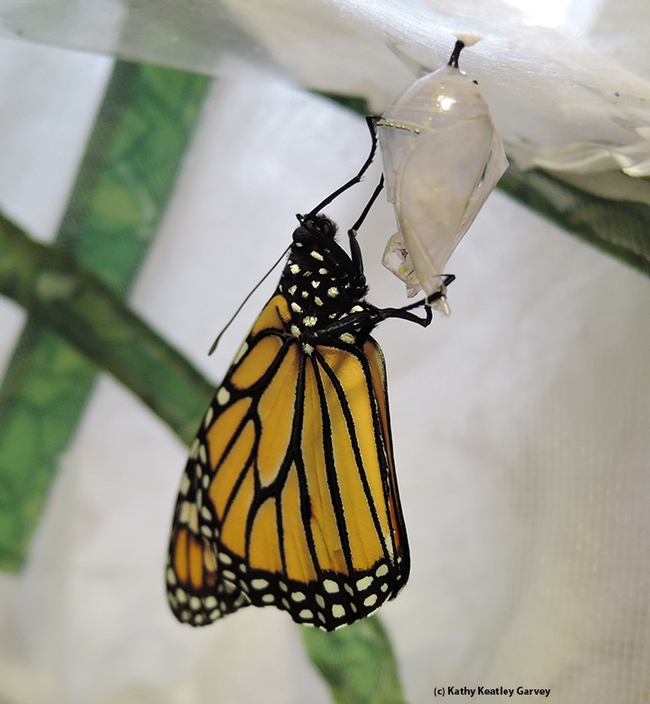
Voila! A monarch butterfly has just eclosed. (Photo by Kathy Keatley Garvey)

A monarch sipping nectar from a Mexican sunflower (Tithonia). (Photo by Kathy Keatley Garvey)
Now That's Massive Weight Gain!
So you're thinking you're putting on a little weight during the holidays. Not to worry. Put it all in perspective by thinking about the larvae of the honey bee. Extension apiculturist Eric Mussen of the UC Davis Department of Entomology, likes to talk about the massive weight gain that occurs...
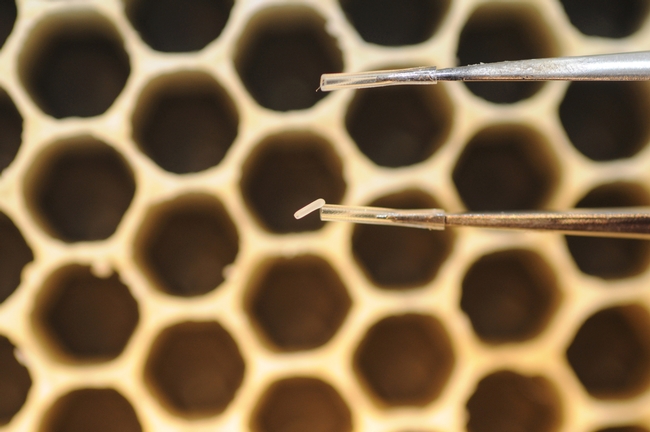
The tiny egg of a future honey bee weighs about 0.1 mg. (Photo by Kathy Keatley Garvey)
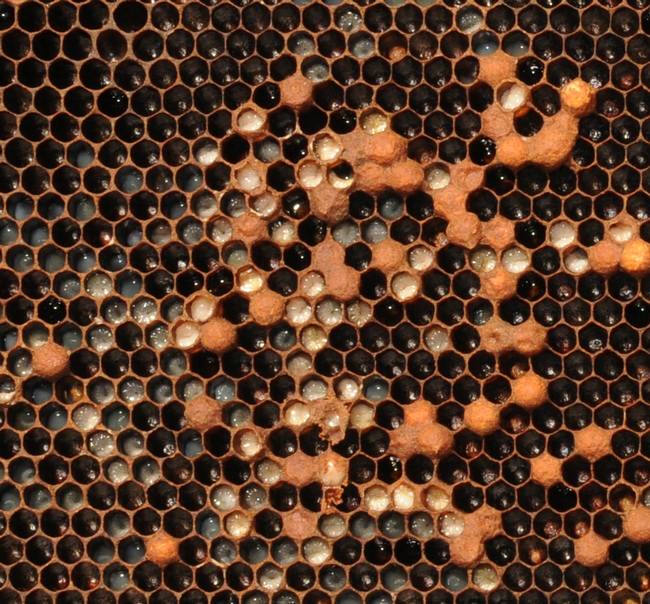
Larvae gain weight rapidly. A larva goes from 0.1 mg to around 120 mg. (Photo by Kathy Keatley Garvey)
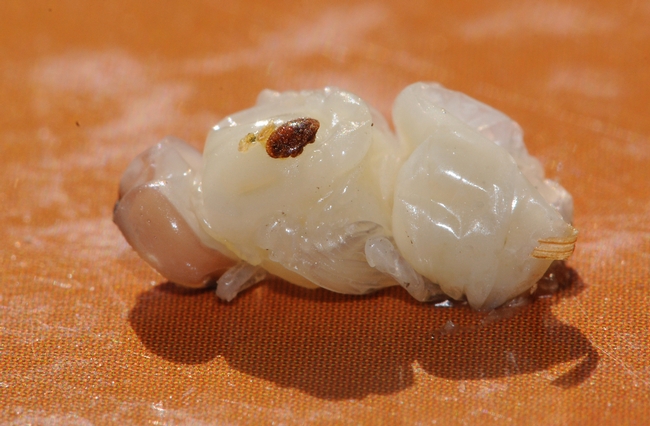
Close-up of a pupa with a Varroa mite. (Photo by Kathy Keatley Garvey)
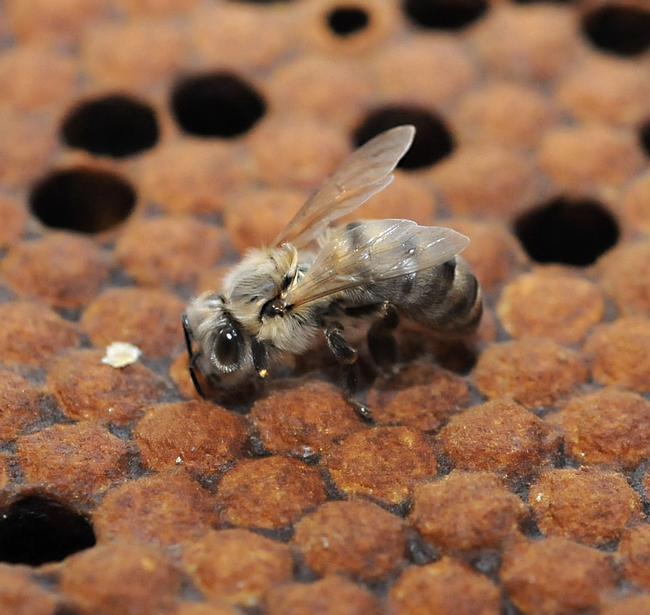
Newly emerged honey bee, just a minute old. (Photo by Kathy Keatley Garvey)
'The Ladybug Shrub'
Our Artemisia, a silvery-leafed shrub bordering our bee friendly garden, looks quite orange and black these days.It's not for lack of water or some exotic disease. It's the ladybug (aka lady beetle) population.If you look closely, you'll see eggs, larvae and pupae and the adults. And if you look...

Ladybug

Larval Stage
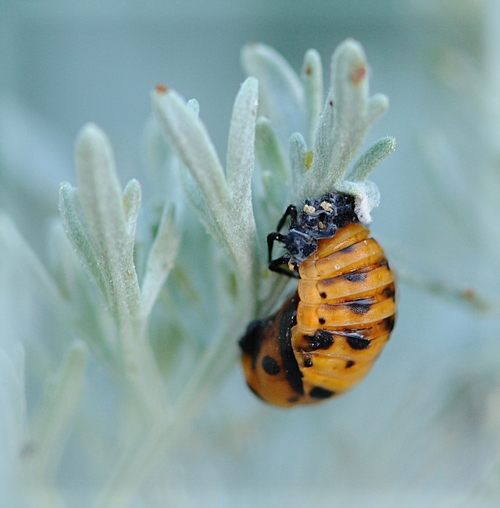
Pupa

Ladybug and a Pupa
To Sir (Syrphid), With Love
If you see a caterpillar near a cluster of aphids, don't squash it. It could very well be the larva of a syrphid or hover fly (family Syrphidae) and it's eating aphids. What do they look like? I happened to capture an image of a tiny syrphid larva on a rose leaf, and sure enough, it was...

Syrphid larva

Adult syrphid fly
